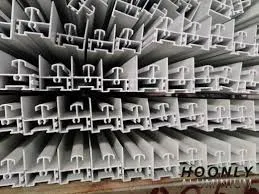Decorative Cast Iron Finials for Elegant Home and Garden Accents
The Allure of Cast Iron Decorative Finials
Cast iron decorative finials are more than just architectural features; they are an embodiment of craftsmanship, history, and aesthetic appeal. These distinctive elements adorn various structures, from grand historical buildings to modern residences, and serve both functional and ornamental purposes. The charm of cast iron finials lies not only in their beauty but also in their durability and versatility.
A Brief History
The use of cast iron in decorative arts dates back to the 18th century, when advancements in metallurgy allowed for the creation of complex shapes and intricate designs. Originally, finials served practical functions, such as protecting the tops of spires and roofs from moisture and providing a finishing touch to railings, fences, and gates. Over the years, these functional elements evolved into ornamental pieces, showcasing the artistic potential of cast iron.
Today, finials can be found atop churches, government buildings, and private homes, often reflecting the architectural style of their respective structures. From Gothic and Victorian designs to more contemporary styles, cast iron finials continue to capture the imagination of architects and designers alike.
The Art of Design
The design of cast iron finials can range from simple geometric shapes to intricate figures depicting flora, fauna, or mythical creatures. Each piece is carefully crafted, often requiring skilled artisans who understand the nuances of working with cast iron. The end results are not only robust but also visually striking, with each finial telling a unique story about its time and place of origin.
Some popular themes in finial design include floral motifs and natural elements, which connect buildings to the surrounding environment. These designs celebrate nature's beauty and reflect the architectural aesthetics of their time. Others incorporate historical or cultural symbols, tying the structures to their heritage and community identity.
cast iron decorative finial

Practical Benefits
Beyond their visual appeal, cast iron decorative finials provide practical benefits. Their heavy and sturdy construction makes them ideal for withstanding harsh weather conditions, such as strong winds and heavy rain. This durability ensures that finials remain intact for generations, contributing to the longevity of the structures they adorn.
Furthermore, finials can act as focal points, drawing the eye upward and enhancing the overall silhouette of a building. Whether part of a garden gate, a rooftop, or a fence, finials elevate ordinary structures into extraordinary ones.
The Modern Revival
In recent years, there has been a renewed interest in cast iron decorative finials, as homeowners and architects look to incorporate traditional elements into modern designs. This revival reflects a growing appreciation for handcrafted, unique details in an age dominated by mass production. Many contemporary designers are blending historical inspirations with modern materials and techniques, creating new interpretations of classic finial designs.
Moreover, with a growing emphasis on sustainability, cast iron has emerged as a preferred material due to its recyclability and minimal environmental impact. This eco-friendly aspect appeals to those who wish to enhance their properties while being mindful of resource use.
Conclusion
In conclusion, cast iron decorative finials are more than mere embellishments; they are a testament to the artistry and durability of cast iron as a material. Their historical significance, combined with contemporary applications, ensures that they remain relevant in today's architectural landscape. Whether you are restoring a historical home or designing a new building, incorporating cast iron finials can add a touch of elegance and a connection to the past, making a lasting impression for years to come.
-
Wrought Iron Components: Timeless Elegance and Structural StrengthNewsJul.28,2025
-
Window Hardware Essentials: Rollers, Handles, and Locking SolutionsNewsJul.28,2025
-
Small Agricultural Processing Machines: Corn Threshers, Cassava Chippers, Grain Peelers & Chaff CuttersNewsJul.28,2025
-
Sliding Rollers: Smooth, Silent, and Built to LastNewsJul.28,2025
-
Cast Iron Stoves: Timeless Heating with Modern EfficiencyNewsJul.28,2025
-
Cast Iron Pipe and Fitting: Durable, Fire-Resistant Solutions for Plumbing and DrainageNewsJul.28,2025
-
 Wrought Iron Components: Timeless Elegance and Structural StrengthJul-28-2025Wrought Iron Components: Timeless Elegance and Structural Strength
Wrought Iron Components: Timeless Elegance and Structural StrengthJul-28-2025Wrought Iron Components: Timeless Elegance and Structural Strength -
 Window Hardware Essentials: Rollers, Handles, and Locking SolutionsJul-28-2025Window Hardware Essentials: Rollers, Handles, and Locking Solutions
Window Hardware Essentials: Rollers, Handles, and Locking SolutionsJul-28-2025Window Hardware Essentials: Rollers, Handles, and Locking Solutions -
 Small Agricultural Processing Machines: Corn Threshers, Cassava Chippers, Grain Peelers & Chaff CuttersJul-28-2025Small Agricultural Processing Machines: Corn Threshers, Cassava Chippers, Grain Peelers & Chaff Cutters
Small Agricultural Processing Machines: Corn Threshers, Cassava Chippers, Grain Peelers & Chaff CuttersJul-28-2025Small Agricultural Processing Machines: Corn Threshers, Cassava Chippers, Grain Peelers & Chaff Cutters












